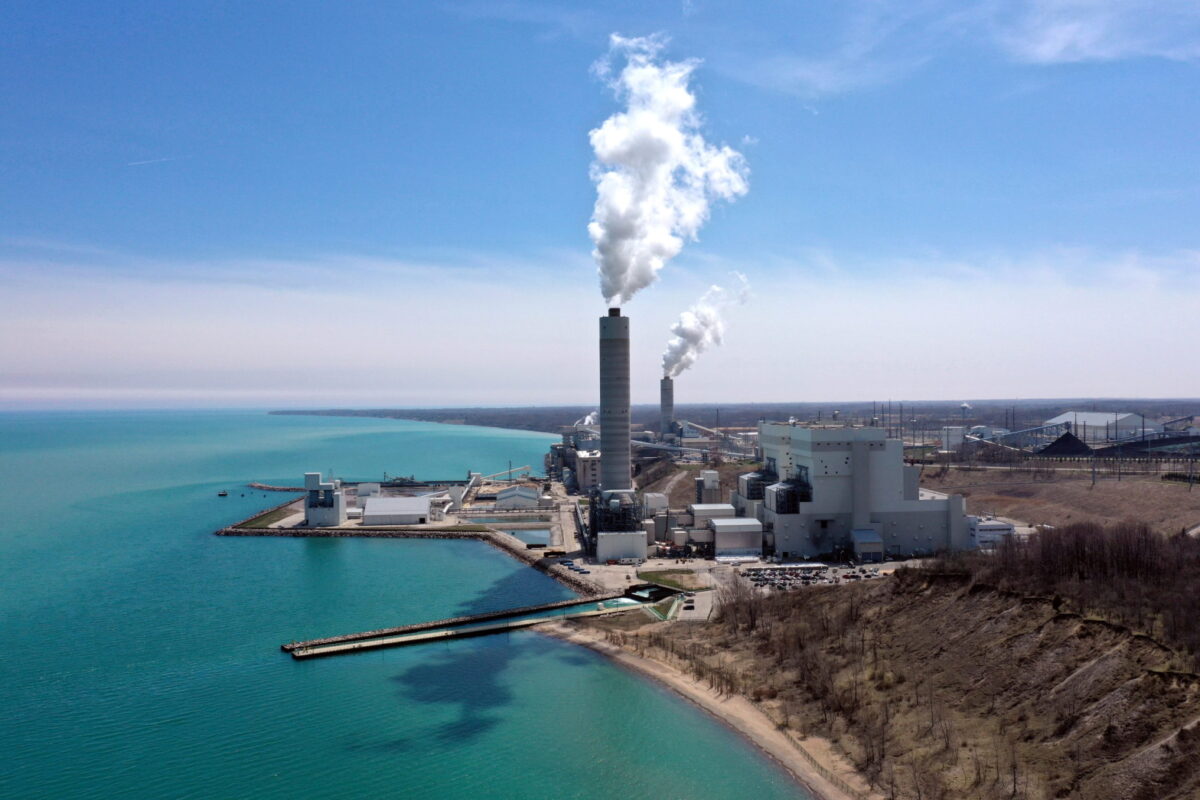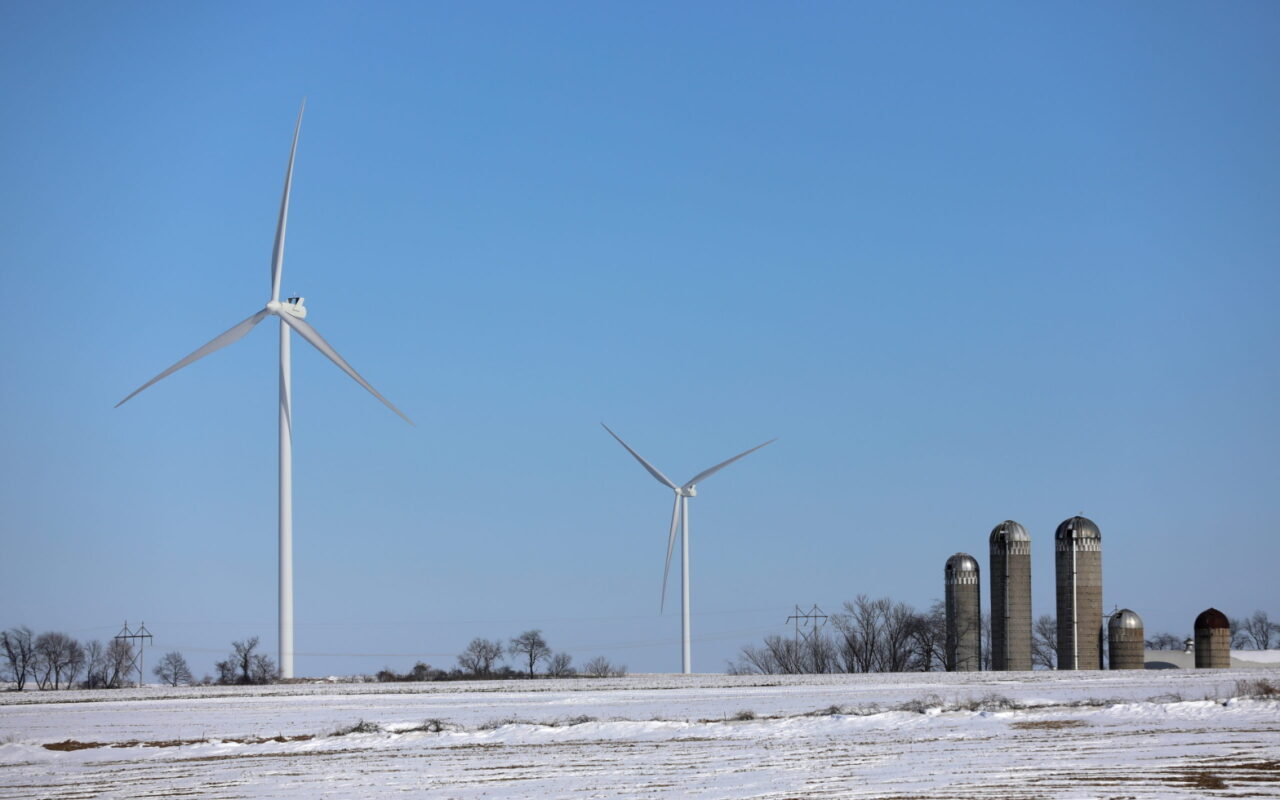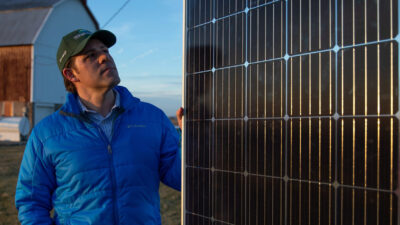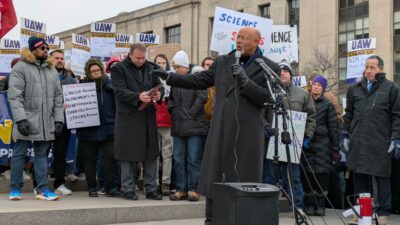As the Great Lakes region experiences warmer and wetter weather, advocates say the time is now to prepare the electric grid for climate change.

Proposed federal rules could jumpstart a formal process for doing that — if regulators decide to finalize them next year.
Here’s what advocates, regulators and other grid experts say about the challenge and its potential solutions.
Extreme heat and cold are already stressing the grid
A three-day heat wave across much of the Great Lakes and Mid-Atlantic regions in September 2013 was one of four extreme heat or cold events since 2011 in which grid operators required transmission companies to cut off power to thousands of customers to avoid uncontrolled blackouts.
Other events include the February 2021 cold snap that froze power plants and wind farms in Texas, leading to widespread outages and a death toll of at least 246 people.
Temperature extremes can disrupt all types of electricity generation sources — including fossil fuel plants, nuclear plants, wind farms, and solar panels — while at the same time increasing the demand for power to heat and cool buildings.
Climate change is likely to increase these stresses

“Extreme heat and cold weather events are occurring with greater frequency, and are projected to occur with even greater frequency in the future,” the Federal Energy Regulatory Commission wrote in a June 16 rulemaking notice addressing climate change and grid planning.
The Great Lakes region, in particular, is expected to see some of the country’s largest increases in electricity demand from air conditioning over the next few decades, according to one study.
“In many parts of North America, peak electricity demand is increasing, and forecasting demand and its response to extreme temperatures and abnormal weather is increasingly uncertain,” the North American Electric Reliability Corporation said in a Dec. 15 report. The quasi-governmental organization sets reliability standards for the grid.
Critics want a different approach to planning
Grid operators are continually planning for the future and say they are ready to respond to changing weather and usage trends from the next few minutes to 15 years ahead. “If things like air conditioning load do continue to climb … we’re in a position to recognize it,” said Ken Seiler, vice president of planning for PJM Interconnection, whose territory covers all or parts of 13 states, including Ohio, Illinois, Indiana, Michigan and Pennsylvania.
Critics, though, say grid operators aren’t asking the right questions. “We don’t know if we are prepared,” said Michael Jacobs, an energy analyst with the Union of Concerned Scientists. The current methods used by grid operators underestimate the range of future extreme weather, he and other advocates say.
Richard Glick, chair of the Federal Energy Regulatory Commission, agrees. In June, FERC proposed developing updated reliability standards that better account for climate change.
“Today’s actions are necessary to ensure that we are prepared for the challenges ahead,” he said when the proposed rules were announced.
Historical weather patterns no longer predict the future
One problem, FERC and advocates note, is that grid operators place too much emphasis on historical weather observations, which are less useful for predicting future patterns because of climate change.
Historical weather trends no longer represent future conditions, and “transmission planners and planning coordinators need to reflect these new realities into their planning processes,” FERC said in its June notice.
Another potential weakness in the existing reliability standards is that their geographic focus is too narrow and fails to prepare for the possibility of more widespread and longer duration events such as heat waves or droughts.
Preventing blackouts is an economic and justice issue
Preventing blackouts during heat waves can be a matter of life and death. The United States already reports an average of more than 1,300 heat-related deaths each year. And the Texas winter storm last year showed how deadly loss of power can be in cold weather.
When blackouts happen, the impacts fall disproportionately on low-income communities and people of color, said Dion Mensah, an energy justice fellow at the Ohio Environmental Council.
Those communities find it harder to replace spoiled food or pay for other losses and may not have other places to go until power is restored.
More transmission and generation could help

One solution supported by advocates is more and better transmission connections between regional electric grids. Grid operator MISO approved about $10 billion worth of transmission system upgrades for its Midwest service area this summer.
Having capacity to move electricity from one part of the country to another works as an “insurance policy, because there is usually power available somewhere,” said Rob Gramlich, president of the consulting group Grid Strategies.
The MISO grid in the central United States was able to avoid the problems of Texas during last February’s storm in part because connections between it and the neighboring PJM grid allowed the transfer of energy from the east.
Advocates say smaller and more dispersed electricity generation and storage should also be part of the solution, diversifying and decentralizing generation to reduce the potential risks from large generators failing.
“We have to work proactively in advocating for a more decentralized, a more distributed grid with renewables so that we can handle these types of major events in a much better, comprehensive way,” Mensah said.
PJM reforms approved by FERC on Nov. 30 should speed up review of applications for new connections to the grid, many of which are for renewables.
Advocates say it’s also important to cut greenhouse gas emissions in order to rein in some of the impacts of climate change, including harm to the electric grid.
FERC will decide next year whether to create new standards
One of FERC’s proposed rules would require the North American Electric Reliability Council to develop updated grid reliability standards. A separate FERC proposal would require transmission operators to submit one-time reports on how they assess and deal with their vulnerability to extreme weather.
The rules proposal has been a priority for Glick, the current FERC chair, whom President Joe Biden nominated for a second five-year term in May. The Senate Energy and Natural Resources Committee, chaired by West Virginia Democrat Sen. Joe Manchin, did not schedule a confirmation hearing. Even after Glick leaves the commission, other members could finalize the rules.
This story is part of a collaborative series, from the Institute for Nonprofit News, the Energy News Network and four other news partners, examining climate resilience across the Great Lakes. This reporting was made possible with support from the Joyce Foundation.
Wisconsin Watch is the news outlet of the nonpartisan, nonprofit Wisconsin Center for Investigative Journalism. We increase the quality and quantity of investigative reporting in Wisconsin, while training current and future investigative journalists. Our work fosters an informed citizenry and strengthens democracy.







